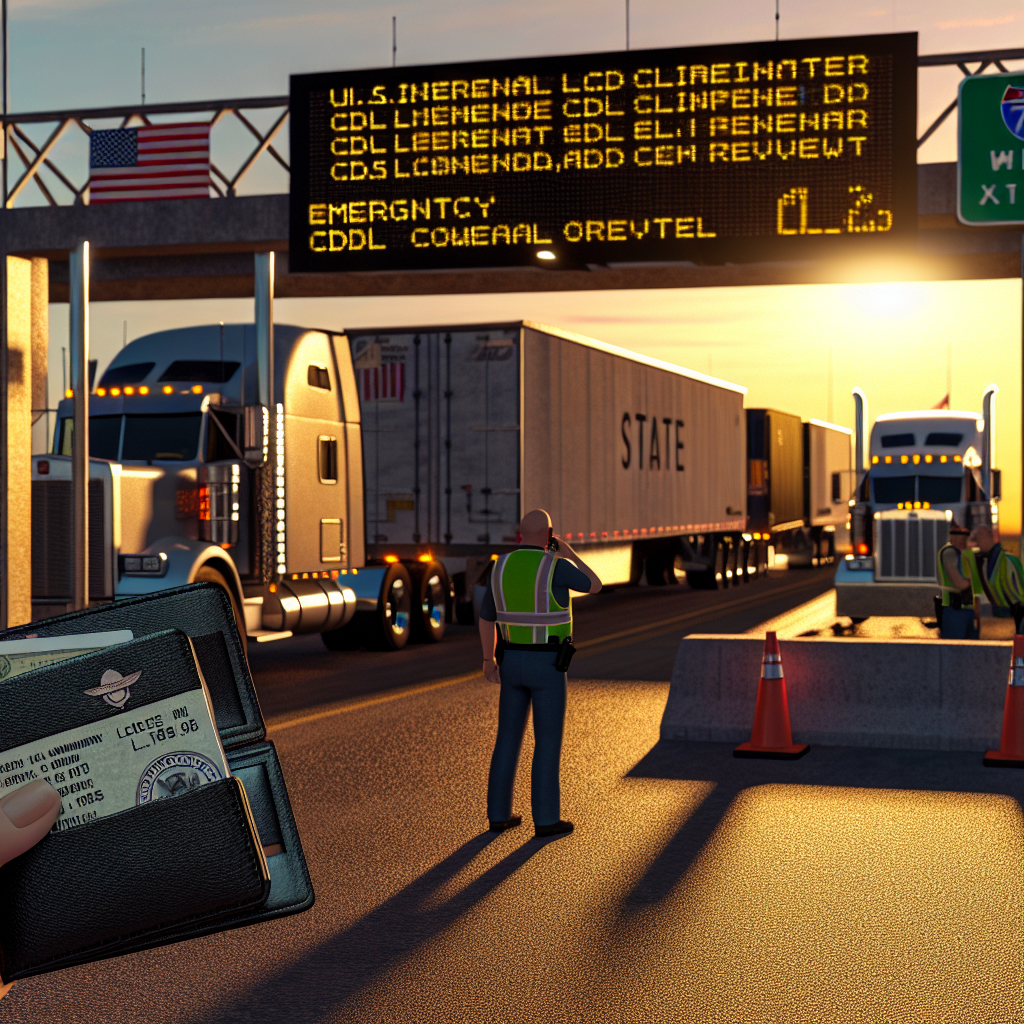U.S. trucking is feeling the first real-world effects of Transportation Secretary Sean Duffy’s emergency clampdown on non-domiciled commercial driver licensing. In the days since the rule’s publication, state motor vehicle agencies have begun pausing issuance and renewals for foreign‑domiciled applicants, setting off operational headaches for carriers that rely on those credentials. California and Oregon are among the first to publicly confirm they’ve halted limited‑term (non-domiciled) CDL and CLP transactions while they retool systems to meet the new federal standard.
What changed is not a tweak at the margins but a wholesale remap of eligibility and verification. Policy analysts note the interim final rule narrows access to non-domiciled CLPs and CDLs to a small set of employment‑based visa categories (specifically H‑2A, H‑2B and E‑2), requires state agencies to run immigration checks through DHS’s SAVE system, caps card validity to the earlier of one year or the I‑94 expiration, and forces in‑person renewals. It also pushes states to audit and correct past issuances that don’t meet the revised criteria.
The compliance burden won’t be evenly distributed. Federal reviewers have already spotlighted systemic shortcomings in multiple states’ programs, and California is under heightened scrutiny: according to documentation summarized by transportation researchers, the state reported roughly 62,000 unexpired non‑domiciled commercial credentials on June 1, 2025, and was directed to immediately pause new issuances while it identifies and fixes non‑compliant records. That mix of volume and corrective work is why fleets operating heavily in the West should expect longer queues at DMV counters and more frequent requests for additional documentation from drivers.
For carriers, the short‑term pain points are already familiar: postponed skills tests for foreign‑domiciled applicants, stopped‑cold renewals for drivers who don’t cleanly fit the narrowed visa list, and scheduling crunches as states stand up SAVE queries and new document-retention workflows. California and Oregon’s immediate pauses signal that other high‑volume licensing states are likely to follow with similar “hold” notices until their legal and IT teams are confident they can comply.
Longer term, the rule’s architecture signals a two‑track market adjustment. First, fleets that employ non‑domiciled drivers will face elevated administrative friction—annual, in‑person renewals against a one‑year clock, plus immigration status confirmations that can’t be delegated to a third party. Second, the cleanup of legacy files could thin available capacity in pockets where non‑domiciled credentials were widely used, even as the pathway for eligible H‑2A/H‑2B/E‑2 workers remains open under stricter controls. Those dynamics are why policy experts frame the rule less as a one‑time purge than as a new, tighter operating baseline for how states credential foreign‑domiciled drivers.
Action items for fleets now: inventory your driver roster to identify non‑domiciled credentials; plan for in‑person renewals on shorter cycles; pre‑stage immigration and identity documentation so drivers aren’t turned away at counters; and pressure‑test customer commitments on lanes where you rely on foreign‑domiciled capacity. For states and training providers, expect temporary throughput losses as knowledge/skills tests and third‑party scheduling are reconfigured to the new eligibility checks.
Why it matters: The emergency rule is as much about process integrity as it is about headcount. By funneling eligibility through SAVE and tightening renewal windows, FMCSA is shifting risk from after‑the‑fact enforcement to front‑end verification. That will make it harder for unqualified drivers to slip into interstate operations—but it will also demand more planning from carriers and state agencies to keep freight moving while the new system beds in.
Sources: FreightWaves, Eno Center for Transportation, CanbyFirst
This article was prepared exclusively for TruckStopInsider.com. Republishing is permitted only with proper credit and a link back to the original source.




